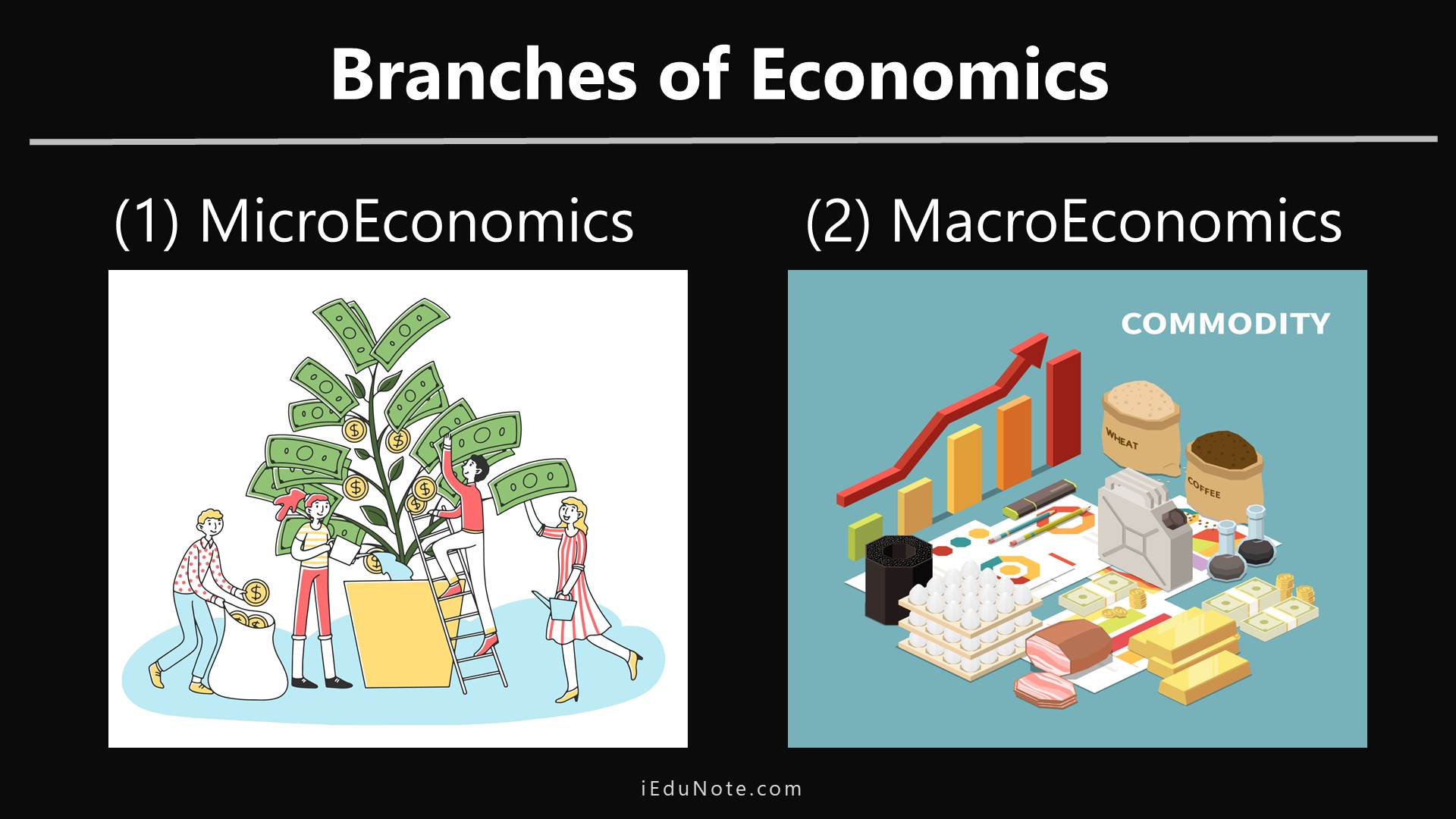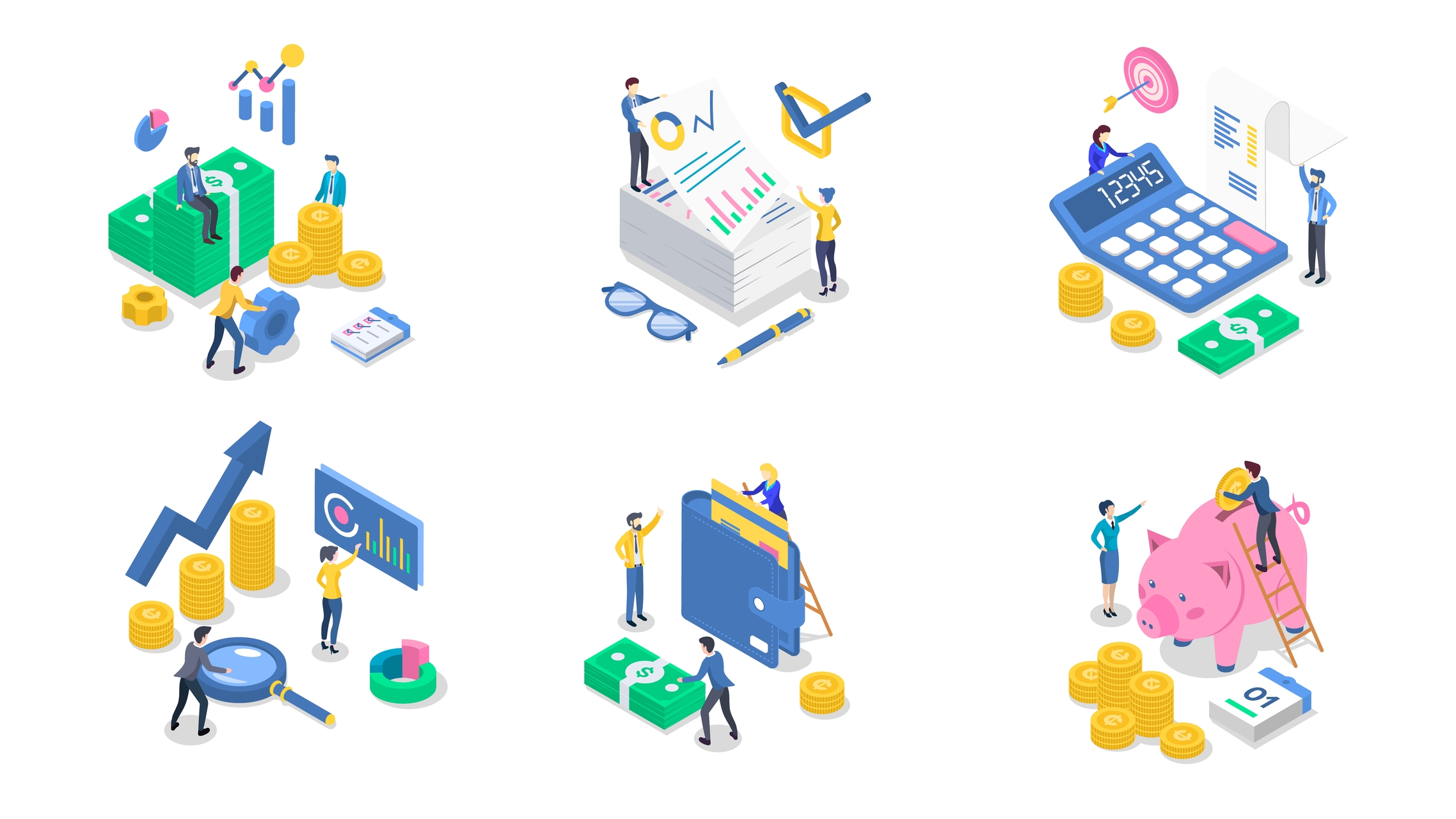Economics is the science that deals with the allocation of limited resources to satisfy unlimited human wants. Think of human wants as being all the goods and services that individuals desire, including food, clothing, shelter, and anything else that enhances the quality of life.
Since we can always think of ways to improve our well-being with more or better goods and services, our wants are unlimited. However, we need resources to produce goods and services, including labor, managerial talent, capital, and raw materials.
Resources are said To be scarce because their supply is limited. The scarcity of resources means that we are constrained in our choices about the goods and services we produce and what human wants we will ultimately satisfy. That is why economics is often described as the science of constrained choice.
Every society has its own way of deciding how to allocate its scarce resources. Some resort to a highly centralized organization. For example, during the Cold War, governmental bureaucracies heavily controlled the allocation of resources in the economies of Eastern Europe and the Soviet Union.
Other countries, such as those in North America or Western Europe, have historically relied on a mostly decentralized market system to allocate resources. Regardless of its market system, every society must answer these questions:
- What goods and services will be produced, and in what quantities?
- Who will produce the goods and services, and how?
- Who will receive the goods and services?
Definition of Economics
Economics’s definition is based on the fundamental concepts of unlimited wants, limited resources, choice problems, and alternative uses.
Professor L. Robbins refers to these concepts in his definition of Economics, which says, “Economics is the science which studies human behavior as a relationship between ends and scarce means which have alternative uses.”
Economics comes from the Greek term “Okonomia” which means household management. Adam Smith is the father of “Economics.” He says “Economics is the Wealth of Nations” in his scholarly work entitled “An Enquiry into the Nature and Causes of the Wealth of Nations,” first published in 1776.
A classical economist L Robins says, “Economics is a science which studies human behavior as a relationship between ends and scarce means which have alternative uses.”
After that, many economists define the subject as “Economics is the study of how societies use scarce resources to produce valuable commodities and distribute them among different people.”
In the modern conception, the subject defines as “Economics is the study of how human beings coordinate their wants & desires, given the decision-making mechanisms, social customs, and political realities of the society.”
Meaning of Economics
Economics is a social science which deals with the economic activities of people. People have unlimited wants, but the resources required to satisfy these wants are limited. The scarcity of resources in the presence of unlimited wants gives rise to all economic activities. If the resources were not scarce, there would not be any economic activity at all.
With unlimited resources, a person could get as much as possible without doing any work. Economics is rightly called the study of the allocation of resources for satisfying human wants.
Since people cannot satisfy all wants using limited resources, they have to choose the most and urgent ones from unlimited wants. A person may feel the wants for food, color television, and a host of other items, but he must meet his want for food before anything. The choice problem also arises because a resource has alternative uses.
For example, a piece of land can be used for growing paddy in it, or it can be used for building a market on it, or it can be put to any other use its owner thinks most profitable. Once its owner has put it to one use, it cannot be used for other purposes. The best use of a resource can be assured by utilizing it to meet the most urgent and important wants.
The ideas put earlier can be clarified with specific examples. Any human activity related directly or indirectly to the satisfaction of human wants is called economic activity.
Economic agents and institutions like households, consumers, production firms, banks, etc., participate in economic activities like production, exchange, consumption, etc.
Each economic agent in the economy is presumed to be an independent decision-making unit.
Economics formalized the decision-making processes of different economic agents under different behavioral assumptions about different economic agents.
Suppose a hungry person has some money in her/his pocket. She/he can eat her/his lunch or buy a shirt with his money. Since he is hungry, he decides to eat lunch.
We assume that the person wants to maximize his satisfaction by consuming a bundle of two or more commodities that she/he can buy with her/his money.
Economics sets and explains the decision-making process of satiation (utility) maximizing consumer. In short, Economics provides the guidelines for making the best use of resources in every sphere of an economic person.
Let’s be more specific. In addition to the general applicability of economic principles mentioned earlier, the study of Economics teaches a person five important things: economic reasoning, economic terminology, economic insights, information about economic institutions, and economic policy options.
First, the study of Economics changes the attitude of a person towards life. People trained in Economics analyze everything in terms of costs and benefits. They do something if its benefits exceed its costs and don’t do something if costs exceed benefits.
Second, economics study helps a man appreciate different economic terminologies like GDP, corporations, growth rate, money supply, etc.
Third, the students of Economics gain insights into the functioning of an economy, exchange rate fluctuations, etc. It is almost a miracle that an economy comprising hundreds of thousands of economic agents with diversified and conflicting interests functions spontaneously and systematically without chaos and anomaly.
Fourth, economics appreciates the roles of different economic institutions like corporations, government, and cultural norms in our lives.
Finally, knowledge of Economics enables a person to appreciate the consequences of government economic policies like a rise in the tax rate, a reduction in the budget deficit, etc.
Branches of Economics
Broadly speaking, economics is composed of two branches;
- Microeconomics, and
- Macroeconomics.
The prefix micro is derived from the Greek word ‘mikros,’ which means “small.”
Therefore, microeconomics studies the economic behavior of individual economic decision-makers, such as a consumer, a worker, a firm, or a manager. It also analyzes the behavior of individual households, industries, markets, labor unions, or trade associations. By contrast, the prefix macro comes from the Greek word ‘makros,’ which means “large.”
Macroeconomics thus analyzes how an entire national economy performs. A course in macroeconomics would examine aggregate levels of income and employment, the levels of interest rates and prices, the rate of inflation, and the nature of business cycles in a national economy.
The constrained choice is important in both macroeconomics and microeconomics.
For example, in macroeconomics, we would see that a society with full employment could produce more national defense goods, but it would then have to produce fewer civilian goods. It might use more of its depletable natural resources, such as natural gas, coal, and oil, to manufacture goods today, in which case it would conserve less of these resources for the future.
A consumer might decide to allocate more time to work in a microeconomic setting but would then have less time available for leisure activities.
The consumer could spend more income on consumption today but would then save less for tomorrow. A manager might decide to spend more of a firm’s resources on advertising, but this might leave research and development less available.
Scope of Economics
The horizon of economics is gradually expanding. It is no more a branch of knowledge that deals only with production and consumption.
However, the basic thrust remains on using the available resources efficiently while giving maximum satisfaction or welfare to the people on a sustainable basis. Given this, we can list some of the major branches of economics as under:
Microeconomics
Microeconomics may be defined as that branch of economic analysis that studies the economic behavior of the individual unit. Microeconomics is also described as price and value theory, the theory of the firm, production, and welfare.
Macroeconomics
Macroeconomics is a study in aggregates, and it is, indeed, a realistic method of economic analysis. This method studies how the economy’s equilibrium is reached consequent upon changes in the macro-variables and aggregates.
International Economics
As the modem world countries realize the significance of trade with other countries, the role of international economics is getting more and more significant nowadays.
Public Finance
The great depression of the 1930s led to the realization of the role of government in stabilizing the economic growth besides other objectives like growth, redistribution of income, etc. Therefore, a full branch of economics known as Public Finance or fiscal economics has emerged from analyzing the role of government in the economy.
Development Economics
After the- Second World War, many countries got freedom from colonial rule, and their economics required different treatment for growth and development. This branch developed as development economics.
Health Economics
A new realization has emerged from human development for economic growth. Therefore, branches like health economics are gaining momentum.
Besides that, other branches of economics are Environmental economics, Urban and rural economics, monetary economics, energy economics, transport economics, demography, labor economics, agricultural economics, gender economics, economic planning, the economics of infrastructure, educational economics, etc…
Methodology of Economics
Economics is a science in the sense that it employs scientific methods of acquiring and disseminating knowledge. There is, however, a sharp distinction between the methods of acquiring knowledge used in Economics and those used in natural sciences like physics, chemistry, etc.
The natural sciences conduct controlled experiments with inanimate matters and animals in laboratories, whereas Economics experiments with human beings cannot be subjected to such controlled experiments. Moreover, randomness is a latent feature of human behavior.
The science of Economics formalized the systematic pattern of a person’s economic behavior, if any, notwithstanding the wide fluctuations in his behavior.
Nevertheless, Economics uses scientific methods of acquiring knowledge. Broadly speaking, there are two methods of gathering knowledge, viz., deductive and inductive methods.
Our next task is to determine which of the two methods is used in Economics.
Deductive Versus Inductive Methods
Deductive reasoning starts with general statements. To make inferences for a particular observation in the form of a singular statement, the following example illustrates deductive reasoning :
- Man is Mortal
- Rahim is a man.
- Rahim is Mortal
Most of the mathematical theorems are general statements, and working out the exercises following the theorems constitutes the application of deductive reasoning. Much of scientific knowledge is, however, based on inductive reasoning.
Inductivism requires that knowledge be based on empirical evidence consisting of singular observations. Consider the following example of inductive reasoning :
- A man named Karim died.
- Another man, named Adam died.
- Another man named John died.
- ∴ Man is mortal.
For some time, people thought that the inductive method was the appropriate method of acquiring scientific knowledge. Newton was thought to have arrived at the laws of Physics using inductive methods.
At the end of the nineteenth century, David Hume, a famous philosopher, and friend of Adam Smith, observed a problem in the inductive method. No finite quantity of singular observations could ever prove that any given general statement is true.
Suppose you had the single observation that the sun rose in Dhaka on March 21, 2000. So, what is the proof that it will rise tomorrow?
The entire universe might collapse, or a major natural disaster might destroy the sun tonight. It is impossible to prove the truth of any knowledge on the basic empirical observations.
Economists are aware of the problem of induction, and instead of proving the absolute truth of economic theory (knowledge), they use some acceptable measures of truth for evaluating their theories. The economic theories, though expressed in the forms of general statements, are based on incomplete induction.
They use deductive arguments and the criterion of logical consistency to derive conclusions for particular observations. The discrepancies between the theories’ predictions and real observations are examined, and these theories are confirmed or refuted using the conventional measures of truth.
This method of acquiring knowledge blending the deductive and inductive methods, and using conventional criteria may be called the conventional method.
Format of Economic Theory
The preceding paragraphs gave you some general ideas about the methodology of Economics. Let’s now explain the specific format of an economic theory.
An economic theory starts with a set of assertions or postulates, denoted A= {A1, A2, ………, An} concerning the behavior of an economic agent.
For example, the postulate may be that consumers maximize utility. The second part of a theory consists of a set of testable conditions denoted by C= { C1, C2, C3, ………, Cn}. The testable conditions must be observable.
For example, if consumers maximize utility, they must buy a smaller quantity of a normal good when its price goes up. The increased price of the normal good is observable and hence constitutes the testable conditions of the theory.
The third part of the theory comprises a set of events, E = {E1, E2, ………, En} predicted by the theory.
In this example, the prediction is that the consumer will buy a smaller quantity of the normal good.
Observing the quantities of normal goods bought at different prices allows us to examine whether the theory’s prediction is right.
The logical structure of economic theory can be shown by this arrow diagram; A → (C → E).
It means that if A is true, then C implies E. In this example, if consumers maximize utility (A), then a rise in the price of a normal good (C) will lead to a fall in the quantity of the normal goods bought (E).
If the prediction is found to be correct, then the theory is confirmed, not proved. If the prediction is wrong, then the theory is refuted.
We cannot prove the absolute truth or falseness of a theory. A useful theory must be refutable but is not refuted. Suppose we have a theory saying that ‘it will or will not rain tomorrow.’
This theory cannot be refuted anyway and hence is not interesting at all. To be interesting, all theories must be refutable.
An economic theory cannot be proved or disproved. An economic theory is confirmed if the theory’s prediction is true and refuted if it is wrong.
Positive Versus Normative Analysis
Positive analysis is concerned with the description of economic phenomena as these are.
It analyzes organizations, functions, and interactions of economic agents in the economy. It also deals with the nature and consequences of different economic policies.
The normative analysis is concerned with value judgments about economic agents. The normative analysis discusses how an economic agent should behave, whereas the positive analysis discusses how it behaves.
Normative analysis suggests what policy a government should take, whereas positive analysis discusses the consequences of different policies.
Suppose, for example, and the government proposes enacting a law that determines the minimum wage for workers in the ready-made garments industry in developing countries.
Positive analysis deals with the following aspects of the minimum wage regulation:
- What will be the implications of the minimum wage for the employment level and price of garments?
- Who will be the beneficiaries, and who will be the losers?
- What will be the net effect of minimum wage regulation on the economy as a whole?
- How will the efficiency and equity of the national economy be affected?
The normative analysis is concerned with whether the government should implement the minimum wage act at all.
It will take a host of economic and non-economic factors to make value judgments on this issue.
It should be noted that much of the economic analysis is positive. A few topics in Economics, however, are normative in nature. Finally, we can think of another type of economic analysis, known as the art of Economics.
It discusses applying the knowledge obtained in Positive Economics to achieve the goals determined in Normative Economics. Suppose we have decided to achieve a particular type of distribution of income in the economy.
Given the way the economy works, how can we obtain the specified pattern of distribution of income? The art of Economics provides answers to this type of question.
Economic Theories
A set of general principles uses for the analysis of economic activity is called an economic theory. Economic theory enunciates the laws and principles which govern the functioning of an economy and its various parts. There has been a lot of controversy among economists about the true scope of economic theory or its subject matter. Many prominent economists define the subject matter of economics or economic theory.
According to Adam Smith, economics enquires into the nature and causes of the wealth of nations. According to Ricardo, economics studies “how the produce of the earth is distributed,” that is, economics deals with the distribution of income and wealth. According to Marshall, economics is a study of humanity in the ordinary business of life. It examines that part of individual and social action connected with material requisites of well-being.
- Consumerism, the theory that increasing consumption of goods is economically beneficial.
- Keynesianism, John Maynard Keynes’s economic theories, advocated government monetary and fiscal programs intended to stimulate business activity and increase employment.







